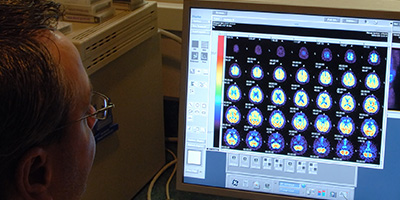About WW-ADNI
Welcome to the World Wide Alzheimer's Disease Neuroimaging Initiative (WW-ADNI) homepage. WW-ADNI is a collaborative effort of scientists from around the world and is the umbrella organization for neuroimaging initiatives being carried out through the North American ADNI, European ADNI, Japan ADNI, Australian ADNI, Taiwan ADNI, Korea ADNI, China ADNI and Argentina ADNI.
WW-ADNI unites leading international investigators in a common effort to:
- Help predict and monitor the onset and progression of Alzheimer's disease
- Establish globally recognized standards to identify and diagnose Alzheimer's disease
- Document cognitive changes linked to physical changes
- Share data across the international research community
The Alzheimer's Association is proud to be a major sponsor of WW-ADNI as part of our global research strategy to defeat Alzheimer's disease.
Goals of WW-ADNI
Specifically, the overall goals of WW-ADNI are to help define the rate of progression of mild cognitive impairment and Alzheimer's disease, and to develop improved methods for identifying the appropriate patient populations to participate in clinical trials. WW-ADNI also aims to standardize the methods used for conducting imaging scans and gathering and testing fluid samples so that data from all sites can be readily combined and easily understood by researchers.
Objectives of WW-ADNI
 The purpose of WW-ADNI is to better understand the physical changes that occur in healthy individuals compared with individuals with subjective memory complaints, mild cognitive impairment (MCI) and Alzheimer's disease. WW-ADNI focuses both on changes in the brain that can be identified with tools such as positron emission tomography (PET) and magnetic resonance imaging (MRI) and changes in fluids such as blood and cerebrospinal fluid (CSF). As its name suggests, another area of focus is to involve individuals from multiple sites around the world and to follow their progress over several years to gain a worldwide picture of the physical changes that lead to Alzheimer's disease.
The purpose of WW-ADNI is to better understand the physical changes that occur in healthy individuals compared with individuals with subjective memory complaints, mild cognitive impairment (MCI) and Alzheimer's disease. WW-ADNI focuses both on changes in the brain that can be identified with tools such as positron emission tomography (PET) and magnetic resonance imaging (MRI) and changes in fluids such as blood and cerebrospinal fluid (CSF). As its name suggests, another area of focus is to involve individuals from multiple sites around the world and to follow their progress over several years to gain a worldwide picture of the physical changes that lead to Alzheimer's disease.
Data collected at WW-ADNI sites
Data from WW-ADNI are expected to play a key role in identifying effective treatments for Alzheimer's, as well as methods that may prevent the disease or slow its progression.
Each WW-ADNI site collects participant data from MRI and PET scans. Other data on physical changes related to the onset and progression of MCI and Alzheimer's (called biomarkers) are also gathered. WW-ADNI is unique in that most of the clinical, neuropsychological, imaging, and biological data gathered is quickly made available to the scientific community at no cost so researchers can use the information when designing or evaluating their own research.
A WW-ADNI face-to-face was held July 12, 2019. Download the ZIP folder with the presentation slides from that meeting.
